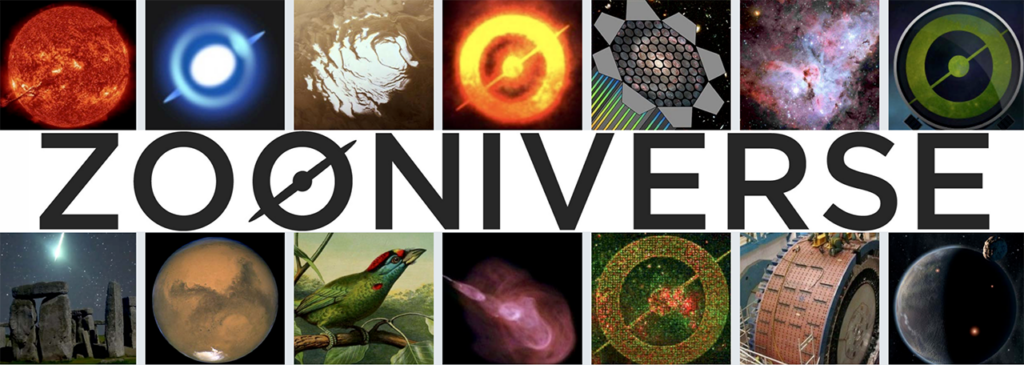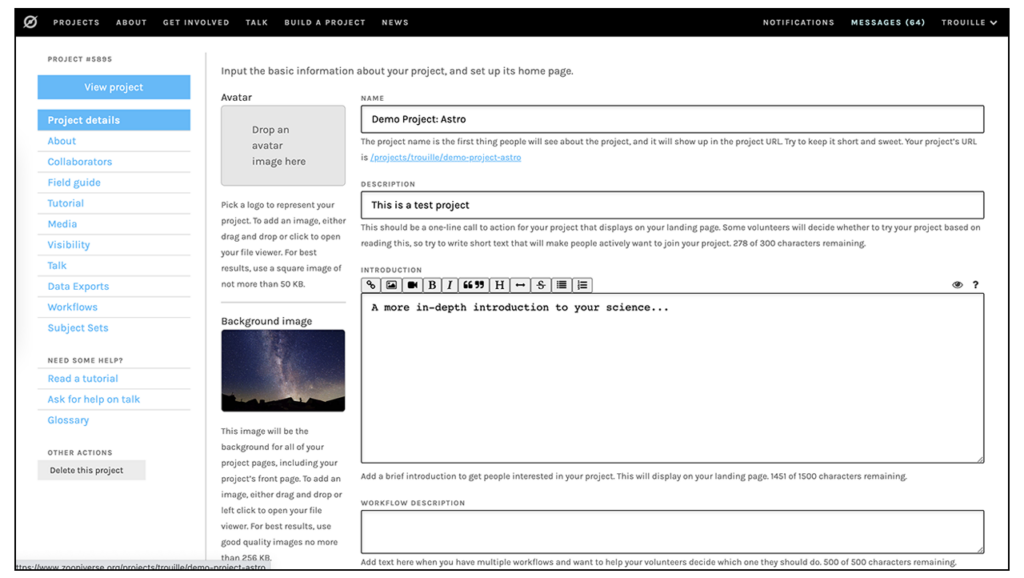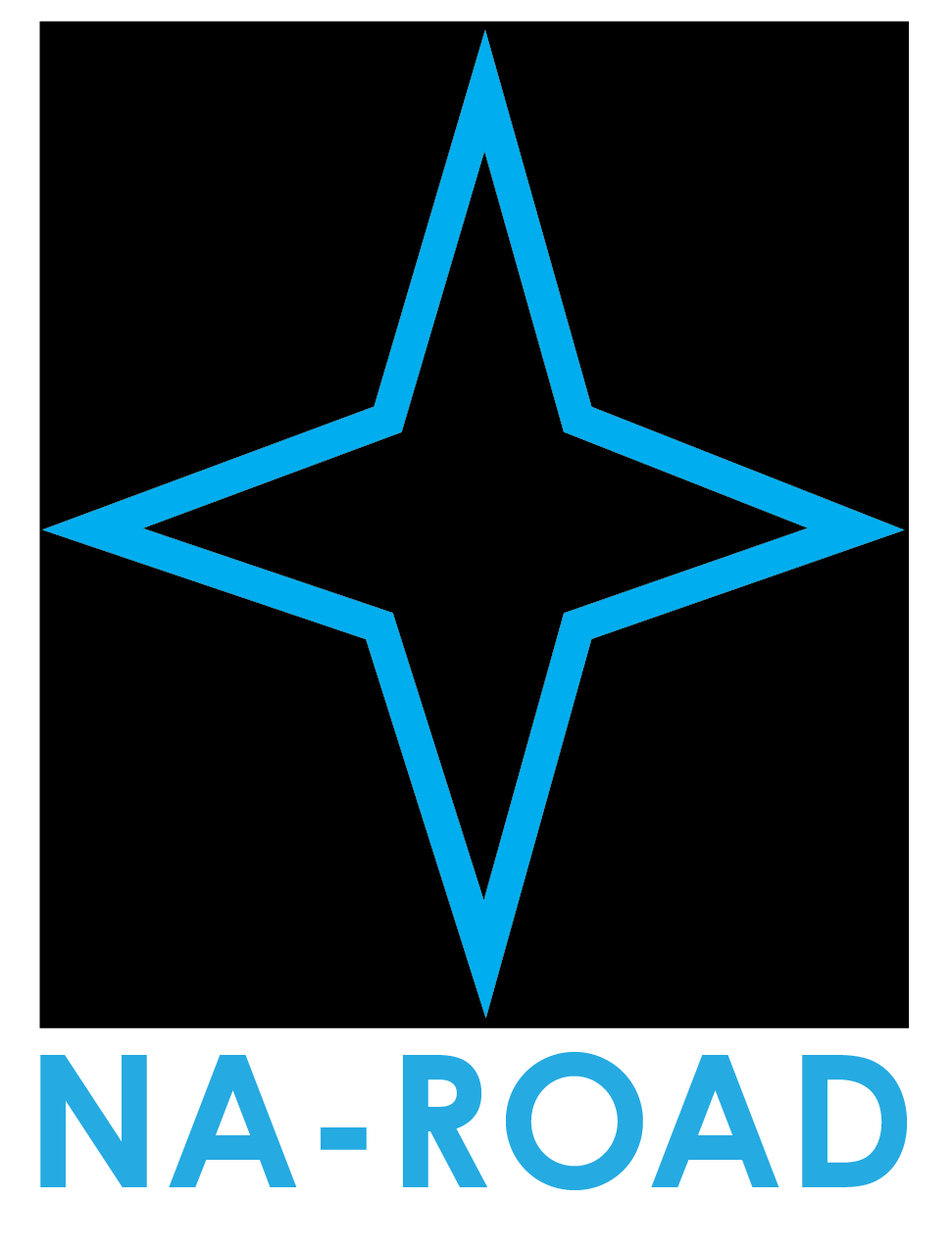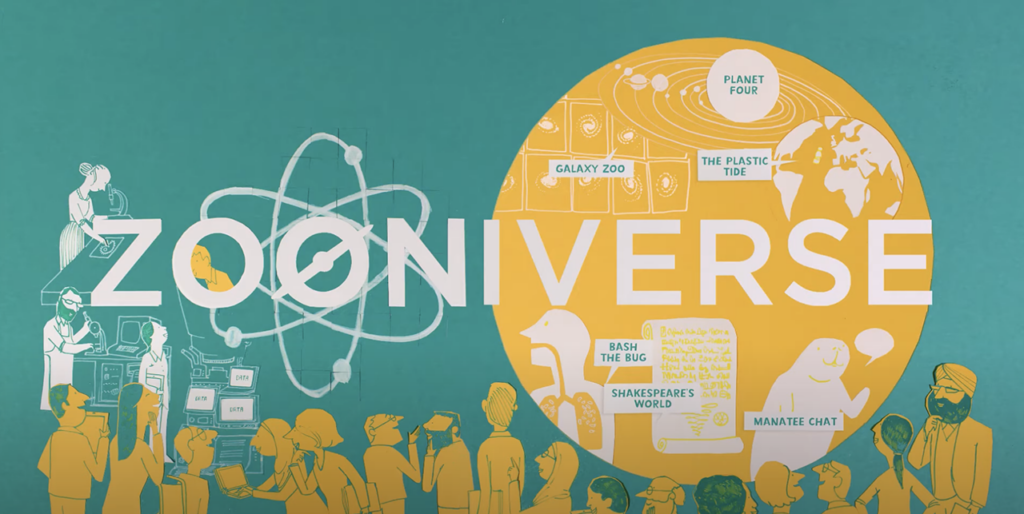
Overview:
Zooniverse is the world’s largest online platform for engaging the public in real research, from discovering planets around distant stars to transcribing historical handwritten documents to marking cells for cancer research to tagging animals in camera trap images (see zooniverse.org/projects). Over 2.5 million people around the world have engaged in over 450 projects, led by researchers from around the world. Zooniverse addresses the need for online collaborative activities that bridge across countries and cultures and engage them in a meaningful experience together (in this case, contributing to real research and being part of an online community of science).
Zooniverse projects are translated into multiple languages (crowdsourced via translations.zooniverse.org). Currently, ~half of Zooniverse participants are located in the US, ~30% in the UK, and ~20% in over 200 countries around the world.
Zooniverse is an open source, open data, online platform for crowdsourcing research. The free Project Builder platform (zooniverse.org/lab) allows anyone to build and launch their own Zooniverse project. The Zooniverse team provides researchers support in using the Project Builder platform, and access to the Zooniverse crowd when they launch their project to the public.

There are currently over 80 active Zooniverse projects. Each Zooniverse project is led by a different research team. There are currently over 150 different research institutions, universities, federal agencies, NGOs, etc. partnered on Zooniverse projects. ~15% of these research teams are based outside of the US/UK/Europe.
Zooniverse as a Tool in Service of the NA-ROAD Strategic Goals:
Zooniverse directly aligns with NA-ROAD Strategic Plan Goal 1: “Advance the use of astronomy for science diplomacy, with collaborative activities that bridge across countries and cultures” and with NA-ROAD Strategic Plan Goal 2: “Advance the use of astronomy and astronomy facilities/resources to support economic development in local communities through both astronomy and non-astronomy activities.”
As part of this effort, we will strive for:
1) Increased Awareness: We will work to increase awareness within the OAD main office and OAD regional offices; promoting the opportunities Zooniverse opens up for both researchers and public engagement, how Zooniverse can be used as a tool for economic development, and the role Zooniverse can play in the use of astronomy for science diplomacy
2) Increased use of Zooniverse as a tool for economic development: For example, see the Zooniverse Power to the People project: https://www.zooniverse.org/projects/alycialeonard/power-to-the-people
3) Increased use of Zooniverse as a tool for science diplomacy: For example, Zooniverse projects included as part of IAU International Celebrations (i.e., Astronomy Day and Women & Girls in Astronomy Week).
4) Broadening access to Zooniverse as a research tool: Increase the number of projects led by researchers outside of US, UK, and Europe by proactively working with OAD regional office leads to increase awareness and support researchers in their region using the Zooniverse Project Builder, including the new Zooniverse – Vera Rubin Observatory data pipeline.
5) Broadening impact of Zooniverse as an education and outreach tool: Increase the participation in Zooniverse by people outside of the US, UK, and Europe by proactively working with OAE and OAO regional office leads to increase awareness and incorporate Zooniverse projects into their programming.


